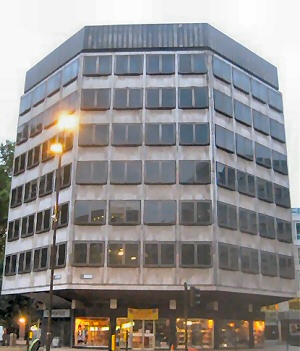5 Cheapside
Architects
 In 2008, St. Martins, submitted a planning application to the city of London for the redevelopment of 5 Cheapside, which is located at the western end of the street adjacent to St Paul's Cathedral. The proposal consisted of lower ground levels, 6 floors and 87,000 square feet of office space, as well as 20,000 square feet of retail space. The design was created by the extremely successful architect John McAslan. The architect believes in contemporary design for a shifting world. McAslan is recognized for creating architecture that improves lives.
In 2008, St. Martins, submitted a planning application to the city of London for the redevelopment of 5 Cheapside, which is located at the western end of the street adjacent to St Paul's Cathedral. The proposal consisted of lower ground levels, 6 floors and 87,000 square feet of office space, as well as 20,000 square feet of retail space. The design was created by the extremely successful architect John McAslan. The architect believes in contemporary design for a shifting world. McAslan is recognized for creating architecture that improves lives.
In 2009, St Martin's plans for their new office building were approved by the planning authorities. The 9,900 meter glazed creation will replace the concrete octagon building that currently occupies the site. The design created a stir among and complaints were made about the inappropriateness of how the structure would take away from the Cathedral. They were persuaded that when balanced with the ground scraper at One Cheapside the contrast of glazing would only draw more attention to city's famous landmark.
Design and Construction
The design of the building compassionately takes into account a range of considerations to enhance and preserve views of the Cathedral. The project majors in sustainability. The building has several unique features to its design. One unique feature is the cantilevered entryway that extends over the entrance to St Paul's station entryway. Another unique feature is the buildings cladding system. The complicated system uses a metal layer that makes the outer layer of glass, giving an opaque view of the main floors while still allowing office occupants to see out.
A highly sustainable design is incorporated that includes a solar shading facade, chilled beams and several heat pumps. The design is intended to create the next generation of structure, while at the same time complementing the existing architecture. With two floors underground the building is 35 metres tall. The crystalline form and striking geometry of the building is a precise and rational response to the Cathedrals height. The design also addresses structural challenges and constraints posed by the underground station.
History
In the middle ages, Cheapside began as a market. As the number of businesses grew so did the number of markets in the capital. The fire of 1666 destroyed Cheapside. In the 19th century the area regained a new name for trade. Shops and restaurants thrived throughout the Victorian Era, but have now been replaced with business buildings and concrete structures.
5 Cheapside was a concrete building referred to as the Octagon building, because it had eight sides. The building was given planning consent in 1963, but was not constructed until 1968. The building was a rare survivor of 1960 architecture, but was threatened with demolition and replaced with a new modern building.
Current Use
Today, Cheapside is becoming one of the city's most prestigious and prominent destinations for shopping. Presently, the new building at 5 Cheapside in London is being used as high quality office building and mix-use development and brings a new building form to a culturally significant site.
The closest London Underground Stations to 5 Cheapside are St Pauls, Mansion House, Bank, Cannon Street, Blackfriars and Monument.
